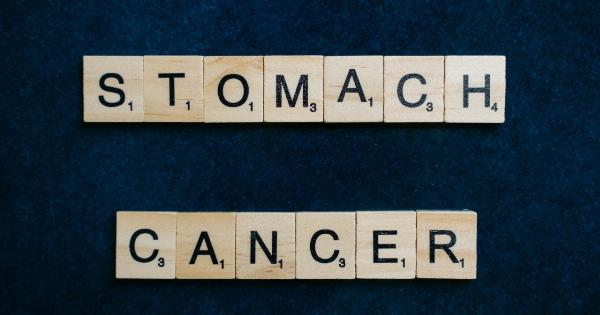Kidney stones are a common urological problem that affects millions of people worldwide. These small, hard deposits form in the kidneys and can cause severe pain, urinary discomfort, and other complications if not treated promptly.
Traditionally, treatment for kidney stones involved open surgery, which often required a lengthy recovery period and carried various risks. However, with advancements in medical technology, minimally invasive approaches have emerged as effective alternatives for treating kidney stones.
These techniques offer numerous advantages, including shorter recovery times, reduced risk of complications, and minimal scarring. In this article, we will explore some of the minimally invasive approaches used to treat kidney stones.
Extracorporeal Shock Wave Lithotripsy (ESWL)
Extracorporeal Shock Wave Lithotripsy, commonly known as ESWL, is a non-invasive procedure that uses sound waves to break large kidney stones into smaller pieces that can pass through the urinary tract more easily.
During the procedure, the patient lies on an ESWL table, and a specialized machine delivers shock waves to the targeted kidney stone. These shock waves create vibrations that gradually break the stone into fragments. ESWL is typically performed on an outpatient basis and requires no incisions.
Ureteroscopy
Ureteroscopy is a minimally invasive procedure that involves the use of a thin tube called a ureteroscope to visualize and treat kidney stones.
The ureteroscope is inserted into the urinary tract through the urethra and guided up to the bladder and then the ureter.
Once the stone is located, it can be treated in several ways, including laser lithotripsy (using laser energy to break the stone), basket extraction (removing the stone using a tiny basket-like device), or fragmentation using other specialized instruments. Ureteroscopy is often used for stones located in the lower urinary tract or in the ureter.
Percutaneous Nephrolithotomy (PCNL)
Percutaneous Nephrolithotomy is a minimally invasive surgical procedure commonly used to remove larger kidney stones. During PCNL, a small incision is made in the patient’s back, and a tube is inserted directly into the kidney.
Using imaging guidance, the urologist locates and removes the stone through this access point. PCNL is particularly effective for stones that are too large or too hard to be treated with other minimally invasive techniques. Recovery time after PCNL may vary depending on the size and complexity of the stone.
Miniaturized PCNL (MPCNL)
Miniaturized PCNL, also known as MPCNL or minimally invasive PCNL, is a modification of the traditional PCNL procedure that utilizes smaller instruments and incisions.
By using miniaturized tools, surgeons can reduce trauma to the surrounding tissues and achieve similar outcomes as traditional PCNL. This approach offers advantages like less blood loss, decreased post-operative pain, and shorter hospital stays. MPCNL is especially suitable for patients with larger or complex kidney stones.
Laparoscopic Nephrectomy
Laparoscopic nephrectomy is a minimally invasive surgical procedure performed to remove a diseased or non-functioning kidney.
While not specifically a treatment for kidney stones, there are cases where stone complications necessitate the removal of a kidney. Laparoscopic nephrectomy involves making several small incisions in the abdomen and inserting a laparoscope (a long, thin camera) and other specialized instruments to perform the surgery.
This technique offers a quicker recovery time and less post-operative pain compared to traditional open surgery.
Robot-Assisted Urological Surgery
Robot-assisted urological surgery, using da Vinci Surgical System, has gained popularity in the treatment of various urological conditions, including kidney stones.
This minimally invasive approach allows surgeons to perform complex procedures with enhanced precision and control. The robotic system consists of robotic arms controlled by the surgeon, which hold and manipulate the surgical instruments.
The robot provides a three-dimensional, magnified view of the surgical site, allowing for meticulous removal of kidney stones while minimizing damage to surrounding tissues.
Ultrasound-Guided Focused Laser Ablation (Focal HIFU)
Ultrasound-Guided Focused Laser Ablation, also known as Focal HIFU (High-Intensity Focused Ultrasound), is a novel minimally invasive treatment for kidney stones.
This technique uses focused ultrasound waves to generate heat and destroy the stone, without the need for incisions or invasive procedures. A specialized ultrasound probe delivers the ultrasound waves precisely to the stone, causing it to break up into small fragments that can be naturally passed out of the body.
Focal HIFU offers the advantage of preserving surrounding healthy tissue and allows for a swift recovery.
Prevention and Lifestyle Modifications
While minimally invasive approaches are highly effective in treating kidney stones, taking preventive measures and adopting certain lifestyle modifications can help reduce the risk of stone formation.
Staying adequately hydrated, maintaining a balanced diet, limiting sodium and animal protein intake, and avoiding excessive consumption of oxalate-rich foods can help prevent the recurrence of kidney stones. Additionally, medications may be prescribed to manage underlying conditions contributing to stone formation.
Conclusion
Minimally invasive approaches to treating kidney stones have revolutionized the field of urology, offering patients safer and more efficient alternatives to traditional open surgery.
Procedures like ESWL, ureteroscopy, PCNL, MPCNL, laparoscopic nephrectomy, robot-assisted urological surgery, and focal HIFU allow for precise stone removal with minimal invasiveness, reduced complications, and faster recoveries. These techniques have significantly improved the quality of life for individuals suffering from kidney stones, providing them with effective and efficient solutions for this common urological condition.




























